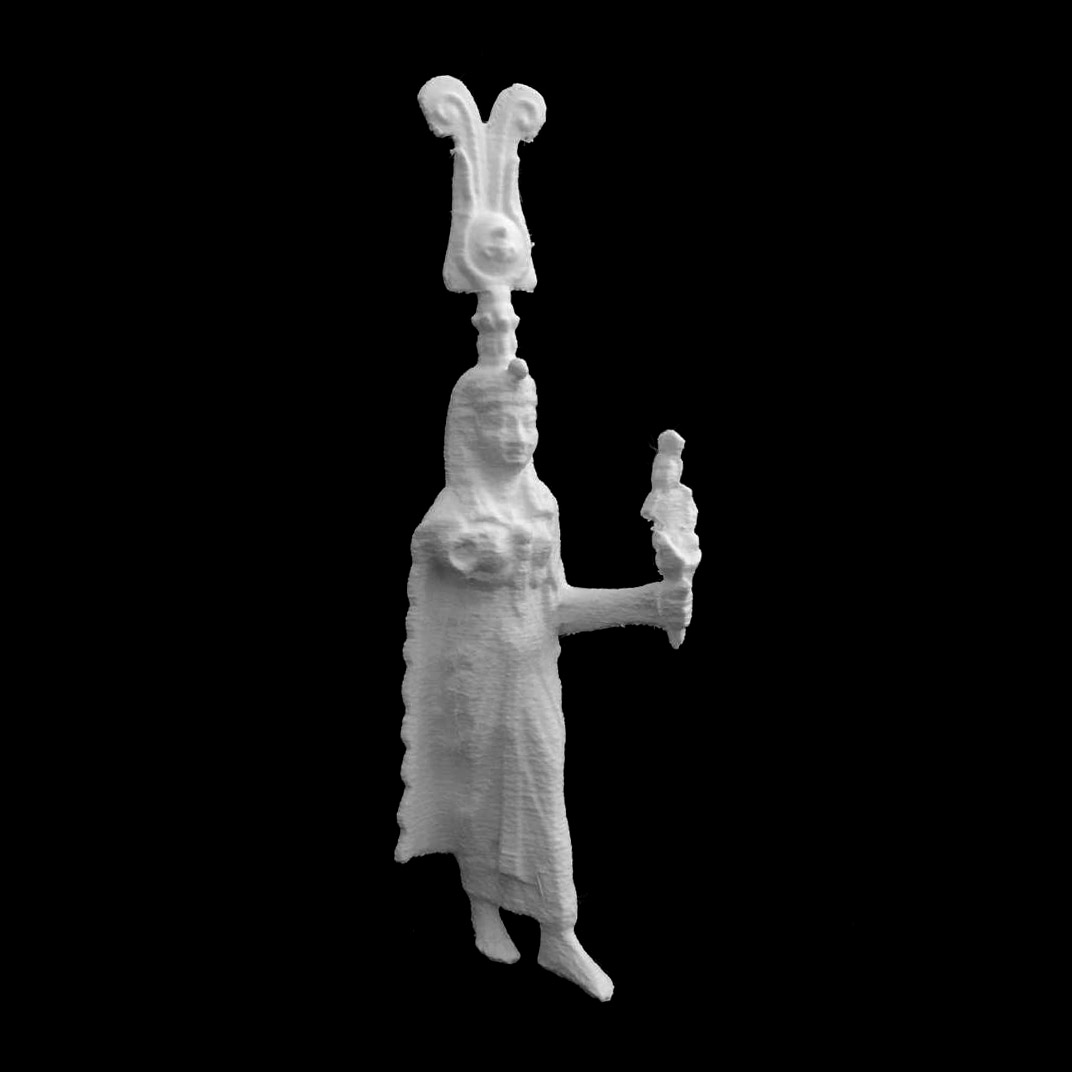
Isis Regina
myminifactory
Of all the Egyptian goddesses Isis is undoubtedly the best-known to a modern public. The Greeks recognized Demeter or Aphrodite in her. Before Alexander the Great's arrival, her cult had already spread outside Egypt. Isis was worshipped on Delos and other islands in the Aegean as early as the fifth century BC. A hundred years later, the cult reached Piraeus, the port of Athens. Over the next centuries, the worship of Isis spread from Greece to the Italian peninsula, the Black Sea coast, Arabia, northern Africa, and Spain. During the Imperial Age, Isis temples were erected even across the empire's borders: along the Danube and Rhine rivers, and as far as Britain. To sum up, Isis was one of the most revered deities of the Roman period. We see the goddess as she was represented at that time. Her stance is typically Egyptian, with her left leg forward. She is wearing a richly draped garment that is knotted with a loop between her breasts and over her right shoulder down to her lower leg. Despite the folds, her nipples and navel are visible through the fabric, as was usual in Egyptian art. Isis is wearing a long wig with a vulture cap over it. On top of that, she has a composite crown, consisting of a high modius (cylindrical head-dress) made of cobras, with stylized cow's horns and two curled ostrich feathers emerging from it. The horns enclose a sun disk over which the uraeus (the upright cobra, a royal symbol) is twisting forward. This crown combines elements that originally belonged to other Egyptian goddesses: the feathers of Maat, personification of truth and order; the sun disk and horns of the heavenly cow, Hathor; the bird cap of the vulture goddess Nekhbet, patron of Upper Egypt; the cobra of the snake goddess Wadjyt, protectress of Lower Egypt. These attributes, together with her hairstyle and dress, belonged to a queen's attire since the New Kingdom (1550-1070 BC). So, the goddess is portrayed as a heavenly queen here: Isis Regina. Isis's right arm is missing, but it is plausible that she had a sistrum (ritual rattle) or possibly an erect cobra in her hand. Her left hand is holding a lotus flower, the source of new life. A small figure is seated on it, naked, one leg folded under it, the other bent forward. This is Harpocrates ('Horus the Child'), son of Isis and Osiris. He is touching his lower lip with his right index finger, a typical gesture in Egyptian pictures of children. His left arm is holding a badly weathered object that probably is a cornucopia or a statuette of Horus. He has a child's single lock of hair and wears a sun disk on his shaven head. The goddess' asymmetric face and the general style of this bronze statue reveal its Roman origins. Isis was not depicted wearing a knotted garment before the Graeco-Roman period; the standing composition, combined with the lotus flower, likewise emerged during the Graeco-Roman Age. Harpocrates' pose belongs to Hellenistic iconography. This image of Isis Regina, omnipotent ruler of the universe, thus combines traditional Egyptian elements with Hellenistic and Roman characteristics.
With this file you will be able to print Isis Regina with your 3D printer. Click on the button and save the file on your computer to work, edit or customize your design. You can also find more 3D designs for printers on Isis Regina.
